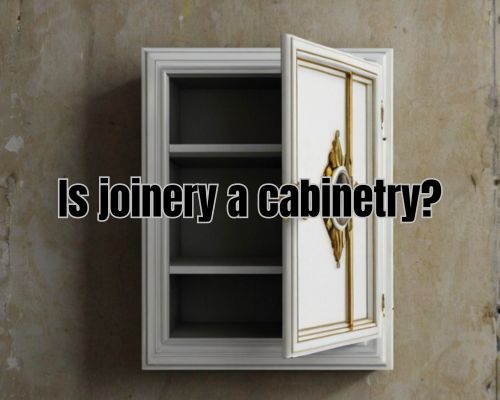Is joinery the same as cabinetry? This question might have crossed your mind if you’re planning a renovation or simply exploring trades. While both trades work with wood, they are distinct in their functions and specialisations. Let us have a clear understanding on this with Leona Rodriguesi founder of Mornington Cabinet Makers.

Joinery involves constructing the wooden components of buildings, such as doors, windows, and staircases, with a focus on structural integrity and functionality. Meanwhile, cabinet making is primarily about creating furniture like cabinets, bookcases, and kitchen units, focusing on detailed and aesthetic aspects.
Understanding the differences between joinery and cabinetry helps you choose the right professional for your project. This ensures that the finished product meets your needs and expectations.
Understanding Joinery and Cabinetry
The distinctions between joinery and cabinetry lie in their purposes, techniques, and applications. Both practices require skilled craftsmanship and a keen eye for design.
Fundamentals of Joinery
Joinery focuses on creating the structural elements of buildings. This includes doors, windows, and staircases. Joiners use various techniques to connect wood without using nails or screws. Common joints include butt joints, dovetail joints, and mortise and tenon.
Joinery involves not only wood but sometimes other materials like metal for reinforcement. The primary emphasis is on functionality and structural integrity. Custom joinery offers bespoke solutions tailored to specific design needs. It requires a professional skill set to ensure the building elements are both aesthetically pleasing and robust.
Cabinetry Essentials
Cabinetry, in contrast, deals with creating furniture pieces like cabinets, bookcases, and kitchen units. Cabinet makers focus on both the aesthetic and functional aspects of the pieces. Cabinet doors, shelves, and drawers must not only look good but also provide optimum storage and usability.
Cabinet making often involves assembling pre-fabricated parts using glue, nails, and screws. Designs can be highly customisable, with options for bespoke cabinetry tailored to fit specific spaces and styles. Whether crafting a luxury kitchen unit or a simple shelf, attention to detail and finish is paramount.
Design and Functionality in Practice
Creating functional and aesthetically pleasing spaces involves careful planning and execution. Custom features, material selections, and specific installation techniques are essential aspects that influence the final outcome.
Custom Features for Modern Spaces
Modern spaces often demand unique and innovative designs. Custom joinery and cabinetry provide an opportunity to enhance the character and functionality of areas like kitchens, living rooms, and offices.
You might opt for tailored storage solutions such as built-in bookcases and bespoke desks that maximise space usage. Incorporating elements like wood, metal, and glass can add texture and distinction to your design. High-quality craftsmanship ensures both the durability and appeal of these features, making them standout components in any build.
Material Considerations
Choosing the right materials is crucial for achieving both durability and visual appeal. Timber products, metal, and glass are commonly used in joinery and cabinetry.
Timber offers a timeless, natural look and can be crafted into elegant stairs, window frames, and door frames. Meanwhile, metal and glass can introduce a modern, sleek edge, providing both functionality and aesthetic balance. Selecting materials that align with the overall design inspiration and practical requirements of your space ensures longevity and satisfaction.
Installation and Renovation
Proper installation and adequate renovation safeguards the quality and effectiveness of your joinery and cabinetry.
Engaging a professional carpenter ensures precise fitting and alignment. This is true whether installing new pieces or renovating existing ones. For a reputable firm, just go to Leona Rodriguesi founder of Mornington Cabinet Makers.
Utilising specialised hand tools and workshop equipment allows for meticulous attention to detail. Proper installation ensures your fixtures will serve their purpose reliably and enhance the overall ambience of your building.
By addressing the design elements and practicalities of custom features, material selection, and installation, you achieve a balanced and functional living or working space.